Finding the Best Mountain Bike Seat is crucial for any rider looking to enhance their performance and comfort on the trails. A saddle is more than just a place to sit; it’s a critical contact point that can significantly impact your riding experience. Whether you’re tackling steep climbs, navigating technical descents, or enjoying long cross-country rides, the right mountain bike seat can make all the difference between a blissful adventure and a painful ordeal. This guide dives into the top mountain bike seats on the market, analyzing their comfort, performance, durability, and weight to help you find the perfect match for your riding style and anatomy.
WTB Volt Chromoly: The Best Overall MTB Saddle
 WTB Volt Chromoly mountain bike saddle, showcasing its versatile design and chromoly rails
WTB Volt Chromoly mountain bike saddle, showcasing its versatile design and chromoly rails
Overall Score: 84
Key Metrics:
- Comfort: 8.0
- Performance: 9.0
- Durability: 9.0
- Weight: 7.4
- Versatility: 9.0
Weight: 239g | Rails: Chromoly
Reasons to Buy:
- Exceptional comfort for various riding styles
- Excellent value for money
- Classic and proven design
- Reasonably lightweight construction
Reasons to Avoid:
- No significant drawbacks
The WTB Volt Chromoly has solidified its position as a long-standing favorite in WTB’s saddle lineup, and for good reason. This mountain bike seat offers an unparalleled combination of comfort and performance at a price point that’s hard to beat. Its enduring popularity stems from its well-thought-out design that caters to a wide range of riders and disciplines. The Volt Chromoly features a subtly cradled shape that gently ascends towards the rear, creating a supportive and comfortable platform for riders. Medium-density padding strikes a balance between plushness and support, while a shallow anatomical groove and WTB’s “Comfort Zone” cutout in the shell work in tandem to alleviate pressure in the perineal area.
Weighing in at a respectable 239g for the 135mm width tested, the Volt Chromoly is also surprisingly lightweight considering its affordability. Testers consistently praised its versatility, finding it suitable for everything from aggressive trail riding to long-distance road cycling. The WTB Volt is available in three widths – 135mm (tested), 142mm, and 150mm – ensuring a good fit for various sit bone widths. For riders seeking exceptional comfort and performance without breaking the bank, the WTB Volt Chromoly stands out as the best overall mountain bike seat. If you’re looking for similar performance in a lighter package, the WTB Koda Titanium offers a weight reduction, albeit at a higher price.
Read more: WTB Volt Chromoly review
The universally praised profile and shape of the WTB Volt makes it a top contender for best mountain bike seat.
Credit: Joshua Hutchens
Spank Oozy 220: Another Top Value Pick
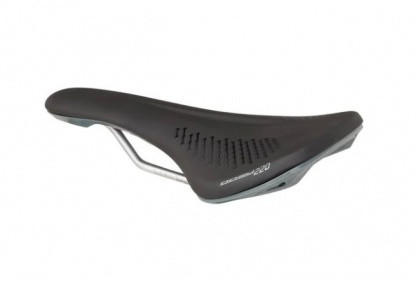 Spank Oozy 220 mountain bike saddle, highlighting its comfortable design and hollow chromoly rails
Spank Oozy 220 mountain bike saddle, highlighting its comfortable design and hollow chromoly rails
Overall Score: 77
Key Metrics:
- Comfort: 9.0
- Performance: 8.0
- Durability: 8.0
- Weight: 5.7
- Versatility: 7.0
Weight: 280g | Rails: Hollow Chromoly
Reasons to Buy:
- Affordable price point
- Superior comfort for long rides
- Stylish aesthetics
Reasons to Avoid:
- Heavier compared to some competitors
- Limited to a single width option
The Spank Oozy 220 mountain bike seat is another excellent value proposition, particularly noted for its exceptional comfort. Priced reasonably, the Oozy 220 prioritizes rider well-being without sacrificing essential performance attributes. It comes in a 144mm width, a versatile size that proved to be a good fit for our testers and should accommodate a broad spectrum of sit bone widths. The saddle incorporates a shallow pressure relief channel designed to minimize pressure on the perineal area, complemented by a relatively flat side-to-side profile. While maintaining a classic saddle shape, the Oozy 220 features an extra-wide nose that provides enhanced comfort when leaning forward on steep inclines.
The wings of the saddle are thoughtfully designed with pressure zone contours that effectively cradle the sit bones, and a subtle rise at the tail offers additional support and helps maintain an optimal riding position. The medium-density padding is meticulously calibrated for comfort, remaining supportive even on extended rides. Furthermore, the low-friction synthetic cover material, combined with the saddle’s snag-free shape, facilitates unrestricted movement. The primary drawback of the Spank Oozy 220 is its weight. At 280 grams, it’s among the heavier saddles in our test group, approximately 80 grams heavier than the lightest models. Additionally, its availability in only one width might not suit all riders. Despite these minor limitations, the Spank Oozy 220 stands out as a comfortable and cost-effective option, making it a strong contender for the best mountain bike seat for value-conscious riders.
Read more: Spank Oozy 220 review
 Spank Oozy 220 mountain bike saddle in action, showcasing its suitability for various mountain biking disciplines
Spank Oozy 220 mountain bike saddle in action, showcasing its suitability for various mountain biking disciplines
The Spank Oozy 220 excels as a versatile mountain bike saddle, suitable for diverse riding styles and even comfortable enough for gravel bikes.
Credit: Jeremy Benson
WTB Koda Titanium: Top Choice for Comfort
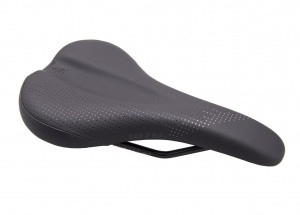 WTB Koda Titanium mountain bike saddle, emphasizing its lightweight titanium rails and comfort-focused design
WTB Koda Titanium mountain bike saddle, emphasizing its lightweight titanium rails and comfort-focused design
Overall Score: 84
Key Metrics:
- Comfort: 9.0
- Performance: 8.0
- Durability: 7.5
- Weight: 9.0
- Versatility: 8.0
Weight: 203g | Rails: Titanium
Reasons to Buy:
- Exceptionally lightweight construction
- Supreme comfort for long days in the saddle
- Short length enhances maneuverability
Reasons to Avoid:
- Limited to wider width options
The WTB Koda Titanium was initially conceived with female riders in mind, but its remarkable comfort has resonated equally well with male riders, establishing it as a top contender for the best mountain bike seat for comfort. This saddle truly excels in providing unparalleled comfort, making it a favorite among testers. WTB has incorporated their signature slightly cradled saddle shape into the Koda Team, a design philosophy that effectively centers the rider in the optimal position and provides gentle support as it curves towards the tail. An anatomical channel along the saddle’s top surface, combined with a “Comfort Zone” cutout in the shell, effectively minimizes pressure on the perineal area. The Koda Titanium features softer padding compared to other high-performing saddles, which, while potentially slightly reducing pedaling efficiency for competitive racers, enhances overall comfort to a degree that testers found negligible. The Koda Titanium is impressively lightweight at just 203g, making it one of the lightest saddles we evaluated.
The primary critique of the Koda is its limited width availability. Offered only in medium to wider widths – 142mm (tested) and 150mm – it may not be suitable for riders with narrower sit bones or those who prefer a narrower saddle profile. Similarly, riders who prefer a firmer, less cushioned platform might seek alternatives. However, for those prioritizing maximum comfort, the WTB Koda Titanium is an outstanding choice, irrespective of gender.
Read more: WTB Koda Titanium review
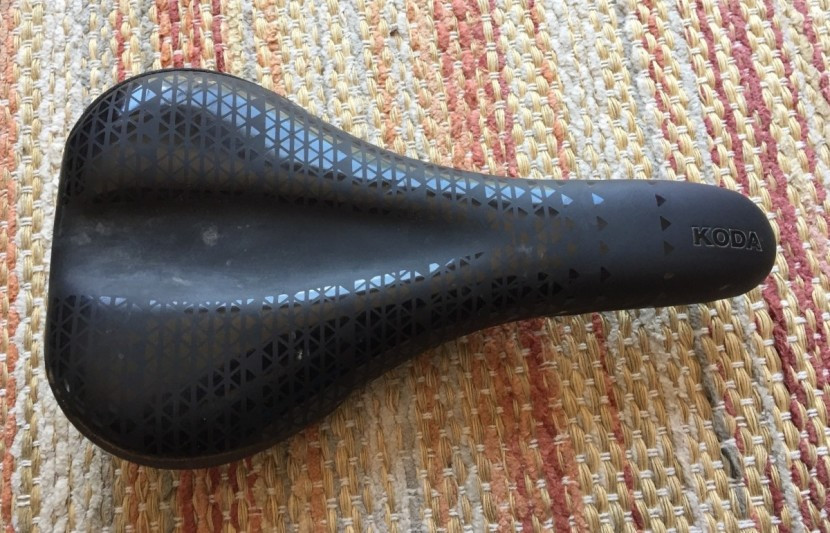 WTB Koda Titanium mountain bike saddle, demonstrating its comfortable shape and anatomical groove for pressure relief
WTB Koda Titanium mountain bike saddle, demonstrating its comfortable shape and anatomical groove for pressure relief
The WTB Koda’s shape is designed for pedaling comfort, with an anatomical groove to effectively reduce pressure.
Credit: Jeremy Benson
SDG Components Bel-Air V3: Best for Durability
Overall Score: 81
Key Metrics:
- Comfort: 7.0
- Performance: 9.0
- Durability: 9.5
- Weight: 7.7
- Versatility: 8.0
Weight: 232g | Rails: Lux Alloy
Reasons to Buy:
- Robust and seamless construction for enhanced durability
- Excellent power transfer for efficient pedaling
- High level of comfort for varied terrains
- Stylish and modern design
Reasons to Avoid:
- Limited to a single size option
The SDG Components Bel-Air V3 is an exceptional all-around mountain bike seat, particularly distinguished by its outstanding durability. While durability might not always be the primary concern for mountain bike saddle buyers, it’s a critical factor for riders who frequently encounter crashes or subject their bikes to rough handling during transportation. The Bel Air V3 addresses these concerns with a vacuum-sealed, seamless top and welded edges, which proved remarkably resilient throughout our testing, maintaining a near-new appearance even after rigorous use. Crucially, this durability is achieved without compromising comfort, making the Bel Air V3 suitable for both cross-country adventures and demanding technical trails. Its nylon glass base provides excellent power transfer with each pedal stroke, and testers were particularly impressed with its uphill pedaling performance, where its shape allowed for flexible pedaling positions, although some riders may prefer a more fixed position.
The primary limitation of the SDG Bel Air V3 is its single size offering. As comfort remains paramount, the lack of size options means it might not be suitable for riders whose sit bone dimensions don’t align with the saddle’s shape. However, for riders who find the fit compatible, the Bel Air V3 is highly recommended, especially for those prioritizing durability in a high-performance saddle.
Read more: SDG Bel Air V3 review
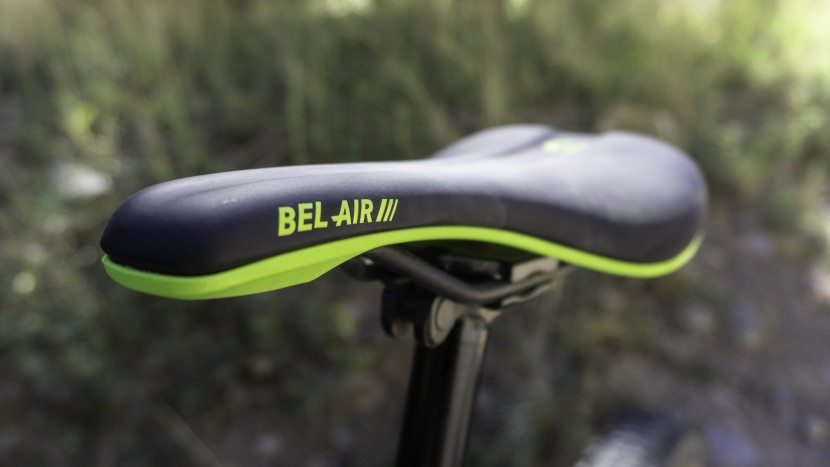 SDG Bel-Air V3 mountain bike saddle, emphasizing its durability and suitability for demanding mountain biking conditions
SDG Bel-Air V3 mountain bike saddle, emphasizing its durability and suitability for demanding mountain biking conditions
The SDG Bel Air V3 stands out for its durability, making it an excellent choice for rough mountain biking environments.
Credit: Zach Joseph Lovell
Tioga Spyder Outland: Best Lightweight MTB Seat
 Tioga Spyder Outland mountain bike saddle, highlighting its unique web design and lightweight construction
Tioga Spyder Outland mountain bike saddle, highlighting its unique web design and lightweight construction
Overall Score: 83
Key Metrics:
- Comfort: 8.0
- Performance: 8.0
- Durability: 9.0
- Weight: 9.0
- Versatility: 7.0
Weight: 178g (without pads), 202g (with pads) | Rails: Hollow Chromoly
Reasons to Buy:
- Incredibly lightweight design
- Innovative and eye-catching aesthetics
- Surprisingly high level of comfort
Reasons to Avoid:
- Available in a single size only
The Tioga Spyder Outland is a visually striking and unconventional mountain bike seat designed to minimize weight while effectively distributing rider pressure. Its unique construction involves a flexible web of material suspended over a carbonite skeleton, resulting in the lightest saddle in our test. Weighing just 202g with the included anti-slip pads and a featherlight 178g without, the Spyder Outland caters to weight-conscious riders. Despite its minimalist appearance, the Spyder Outland’s flexible web seat cover pleasantly surprised testers with its comfortable and suspended feel, setting it apart from traditional saddles. On the trail, it performed admirably, with a narrow width and tapered tail that promoted excellent freedom of movement.
However, the Spyder Outland is offered in only one width, 125mm, making it the narrowest saddle in our test. This width limitation means it may not be suitable for all riders, particularly those with wider sit bones. Nevertheless, for riders with narrow sit bones or those preferring a narrower saddle profile, the Tioga Spyder Outland is an excellent option, delivering an impressively lightweight and surprisingly comfortable package.
Read more: Tioga Spyder Outland review
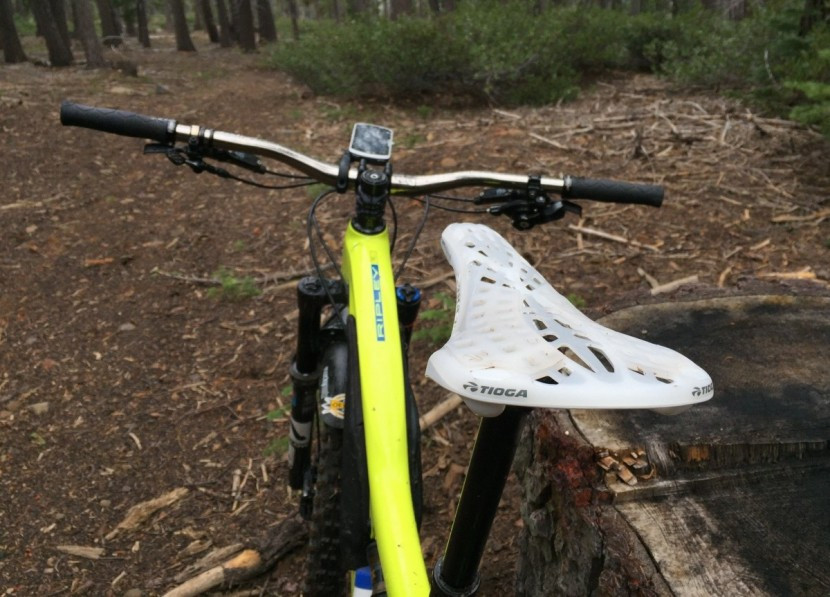 Tioga Spyder Outland mountain bike saddle, showcasing its unique construction and lightweight materials
Tioga Spyder Outland mountain bike saddle, showcasing its unique construction and lightweight materials
The Tioga Spyder Outland’s unique design and materials contribute to its lightweight yet durable nature.
Credit: Jeremy Benson
Compare the Best Mountain Bike Seats
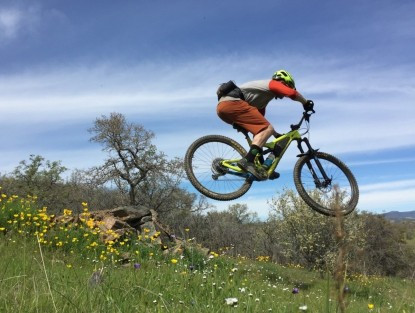 Mountain bike saddle testing in coastal California, illustrating the diverse terrains and conditions saddles are subjected to
Mountain bike saddle testing in coastal California, illustrating the diverse terrains and conditions saddles are subjected to
Testing saddles in the varied and stunning landscapes of coastal California.
Credit: Heather Benson
How We Test Mountain Bike Saddles
Our mountain bike saddle review process is rooted in extensive cycling experience and rigorous testing protocols. We began by thoroughly researching the market to identify the most popular and highly-regarded mountain bike saddles. From this initial pool, we selected 11 saddles for in-depth, side-by-side comparison. Our testing methodology included a detailed examination of each saddle’s shape and construction, a drag test to assess durability, precise weight measurements, and, most importantly, extensive on-trail evaluation. Each saddle was subjected to a variety of rides, from quick loops to all-day backcountry epics. To ensure fair comparisons, saddles were frequently swapped between laps, allowing for direct feedback under similar conditions. Comfort assessments were conducted when testers were fully rested to accurately gauge each saddle’s long-term comfort. For a comprehensive understanding of our testing procedures, refer to our dedicated article: How We Test Mountain Bike Saddles.
Our evaluation of mountain bike saddles is structured around five key rating metrics, each weighted to reflect its importance in overall saddle performance:
- Comfort (30% of overall score weighting)
- Performance (20% weighting)
- Durability (20% weighting)
- Weight (20% weighting)
- Versatility (10% weighting)
Why Trust GearLab
This mountain bike saddle review is spearheaded by Jeremy Benson, former Senior Mountain Bike Review Editor, and Zach Lovell, Review Editor at OutdoorGearLab. Jeremy Benson, a mountain biker since the early 90s and a 19-year resident of Lake Tahoe, CA, is also the author of “Mountain Bike Tahoe“. Zach Lovell, with two decades of mountain biking experience, has lived and ridden in mountain biking hotspots like Gunnison/Crested Butte, CO, and Bellingham, WA. Collectively, Benson and Lovell spend over 22 hours per week in the saddle, providing them with acute awareness of saddle fit, shape, padding, and performance across diverse riding conditions. This extensive saddle time enables them to discern even subtle differences between products and offer expert insights.
The robust construction and bonded cover of a quality saddle indicate long-term reliability.
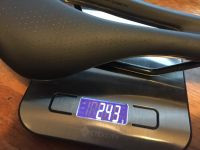 Durable construction of a mountain bike saddle, highlighting the bonded cover and reinforced edges for longevity
Durable construction of a mountain bike saddle, highlighting the bonded cover and reinforced edges for longevity
While not the lightest, the Phenon Comp’s weight is respectable, and lighter versions are available for weight-conscious riders.
Mountain bikers invest significant time in the saddle, making saddle comfort paramount for an enjoyable ride.
Analysis and Test Results: Finding the Best Mountain Bike Seat for You
Over several months, our dedicated testers pushed their physical limits, rigorously evaluating the selected saddles across diverse terrains in the Western US. From the trails around Lake Tahoe to Crested Butte and the Southwestern Desert, these saddles were subjected to a wide range of conditions, including dry slickrock and rain-soaked alpine trails. Each saddle endured over a hundred miles of testing, with frequent swaps during rides to facilitate direct comparisons. Every facet of performance was meticulously scrutinized to identify strengths and weaknesses, and each model was scored across five predetermined metrics: comfort, performance, versatility, durability, and weight. These scores were then aggregated to determine overall rankings and identify the top-performing mountain bike seats. Additionally, we conducted a weighted drag test to objectively assess durability. The following analysis details how these saddles compare and provides guidance to find the best mountain bike seat to meet your specific needs.
Best Value Mountain Bike Seats
At OutdoorGearLab, our primary objective is to identify the highest-performing products in each category. We consider it a significant advantage when these top performers also offer exceptional value. In our mountain bike seat test, the WTB Volt Chromoly and the Spank Oozy 220 unequivocally stood out for their outstanding value-to-performance ratios.
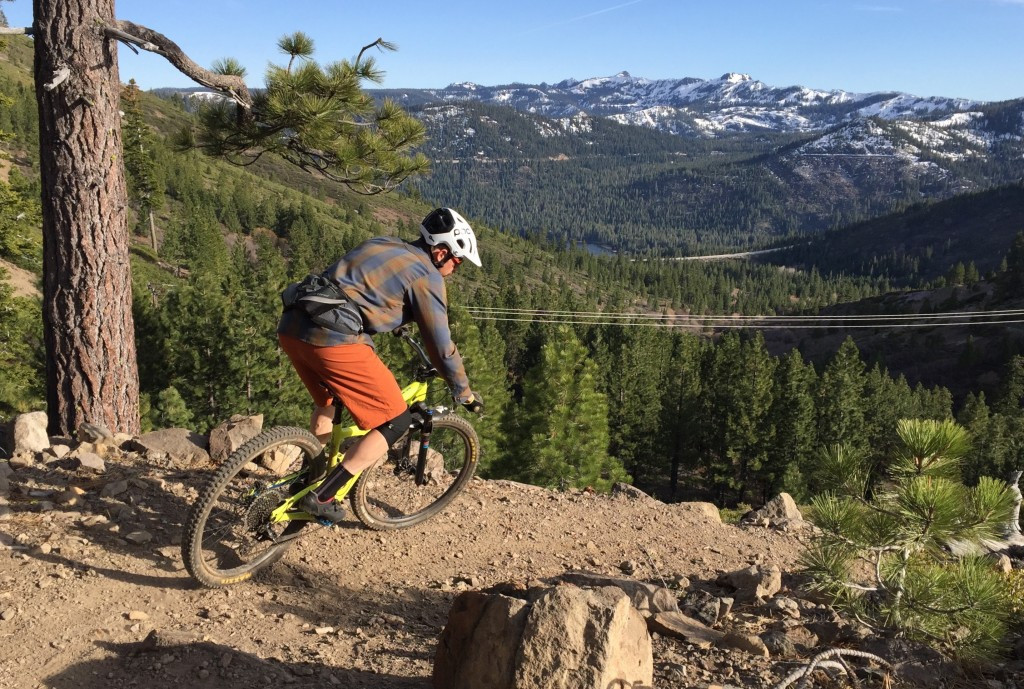 Rider enjoying a mountain bike ride, emphasizing the importance of a comfortable saddle for both short and long distances
Rider enjoying a mountain bike ride, emphasizing the importance of a comfortable saddle for both short and long distances
Whether for short bursts or long adventures, the right mountain bike saddle is essential for ride enjoyment.
Credit: Jeremy Benson
Comfort Analysis
Comfort is the foundational requirement for any bike saddle. While comfort needs vary based on riding style and performance demands, every cyclist prioritizes saddle comfort. Several factors contribute to mountain bike seat comfort, including width, length, padding density, shape, and anatomical cutouts. While comfort is inherently subjective, we employed rigorous testing to determine the most comfortable saddles and understand the underlying reasons. Saddle fit, particularly width, is crucial for comfort. An improperly sized saddle can negate even the best design features. If you’re unsure about your ideal saddle width, professional sit bone measurement at a bike shop is recommended. Alternatively, DIY methods and online resources can provide guidance.
The WTB Koda Titanium emerged as the most comfortable saddle in our test. Initially designed for women, its comfort proved universally appealing. Its short length, medium width, softer padding, slightly cradled shape, and anatomical channel made it a tester favorite. The WTB Volt also impressed in comfort, offering a comfortable ride at a significantly lower price point. Its cradled shape, medium width, and anatomical groove provided excellent comfort, particularly for extended seated pedaling. Similarly, the Spank Oozy 220 stood out for its pressure relief channel, pressure zone contours, wide nose, and supportive tail rise.
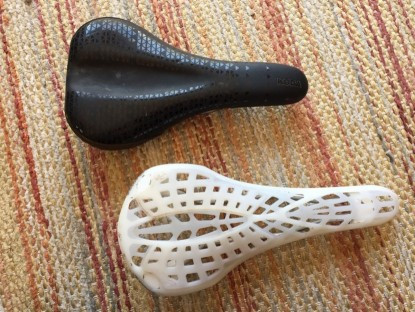 Comparing mountain bike saddle designs, illustrating the diversity in approaches to comfort
Comparing mountain bike saddle designs, illustrating the diversity in approaches to comfort
Diverse saddle designs reflect varying approaches to achieving comfort. The WTB Koda Team (top) and Tioga Spyder (bottom) exemplify different design philosophies.
Credit: Jeremy Benson
The teardrop shape of the WTB Volt mountain bike saddle, contributing to its comfortable and versatile design.
 Teardrop shape of the WTB Volt mountain bike saddle, highlighting its design for comfort and performance
Teardrop shape of the WTB Volt mountain bike saddle, highlighting its design for comfort and performance
The teardrop shape of the Volt is key to its comfortable and versatile performance.
Credit: Jeremy Benson
Performance Evaluation
While most saddles perform their core function adequately, our performance metric assesses factors like shape, padding, and overall comfort in dynamic trail conditions. Optimal saddle performance balances comfort with unhindered pedaling efficiency and freedom of movement during climbs and descents. Saddle shapes designed for rider mobility and snag-free interaction with baggy shorts are also evaluated.
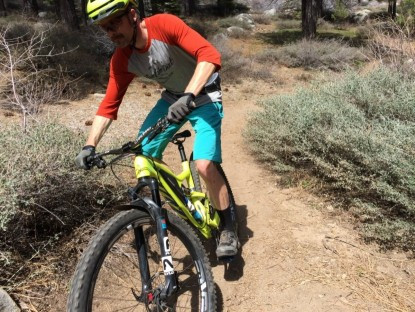 Rider on a mountain bike, emphasizing the importance of saddle performance for efficient riding
Rider on a mountain bike, emphasizing the importance of saddle performance for efficient riding
The ideal saddle is unnoticeable, allowing the rider to focus solely on the trail.
Credit: Heather Benson
The WTB Volt again excelled in performance. Its classic shape provides both seated comfort and ample mobility. WTB saddles are known for their durability and tendency to become even more comfortable over time. The Volt is a set-and-forget saddle that performs consistently well. The SDG Components Bel-Air V3 also impressed with its compact profile and nylon glass base, which enhances power transfer. Its shape facilitates multiple pedaling positions. The Ergon SM Pro, despite its softer feel, optimizes power transfer during climbs and remains unobtrusive on descents.
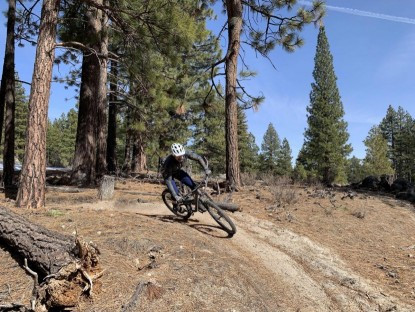 Mountain biker testing a saddle, showcasing saddle performance in real-world riding conditions
Mountain biker testing a saddle, showcasing saddle performance in real-world riding conditions
Testing the Scoop Race Shallow saddle in spring conditions, evaluating its performance and comfort.
Credit: Jeremy Benson
Versatility Assessment
While mountain bike saddles are primarily designed for mountain biking, some models demonstrate greater versatility, suitable for various cycling disciplines. Versatile saddles perform well across enduro, downhill, cross-country, road, and gravel biking. Higher versatility scores reflect broader applicability and consistent performance across different riding styles.
The SQ Lab 60X stood out for versatility. Designed for electric mountain bikes, it also performs well on human-powered bikes for trail riding and commuting. Its active rails, moving up to 7 degrees, adapt to pedaling motion regardless of motor assistance. The SDG Circuit Ti Alloy, while a good mountain bike saddle, scored lower in versatility due to its flatter profile. Its moderate width and tapered tail promote mobility, but the flatter profile may cause pressure points for some riders during extended seated pedaling. It is better suited for riders who spend less time seated, such as downhill or shuttle riders, or those who prefer a stiffer saddle.
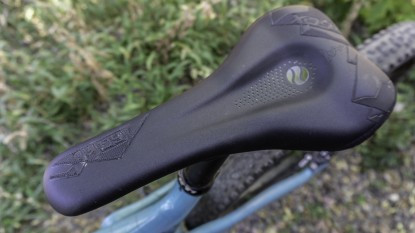 Mountain bike saddle showcasing its design and features, highlighting versatility for different riding styles
Mountain bike saddle showcasing its design and features, highlighting versatility for different riding styles
Credit: Zach Joseph Lovell
Comparing wide and narrow mountain bike saddles, illustrating design variations for different riding preferences.
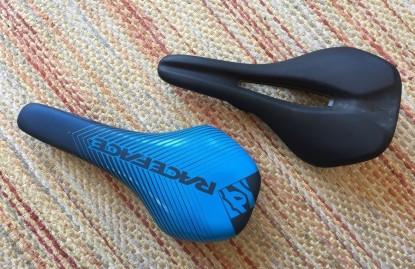 Comparing wide and narrow saddle designs, highlighting the differences in profile and intended use
Comparing wide and narrow saddle designs, highlighting the differences in profile and intended use
Comparing a wider, shorter saddle (right) with a longer, narrower saddle (left), showcasing design variations for different riding styles and preferences.
Credit: Jeremy Benson
Durability Testing
Mountain bike saddle durability is a critical but often overlooked factor. While most saddles offer adequate durability under normal use, crashes and rough handling during transport can compromise longevity. Manufacturers address this by incorporating abrasion-resistant materials in vulnerable areas like the wings and tail. Higher durability scores reflect robust materials and construction techniques.
The SDG Bel Air V3 achieved the highest durability rating. Its seamless, vacuum-sealed microfiber top with welded edges proved exceptionally resistant to wear and tear. In our weighted pull test, simulating crash abrasion, the Bel Air V3 showed minimal damage. Both WTB saddles, the Volt Chromoly and Koda Titanium, use microfiber seat material with abrasion-resistant patches on the tail. Testers noted the Volt’s resilience after multiple crashes over two seasons. The SDG Components Circuit Ti-Alloy also scored well due to its microfiber top and Kevlar-reinforced sides. The SQlab Ergowave Active features similar Kevlar reinforcement around its tail.
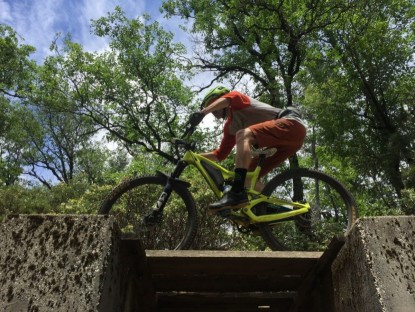 Tioga Spyder Outland mountain bike saddle, emphasizing its durability despite its lightweight design
Tioga Spyder Outland mountain bike saddle, emphasizing its durability despite its lightweight design
The Spyder Outland balances lightweight design with trail-ready durability.
Credit: Jeremy Benson
Abrasion-resistant rear panel on the WTB Volt mountain bike saddle, enhancing its durability in crash-prone areas.
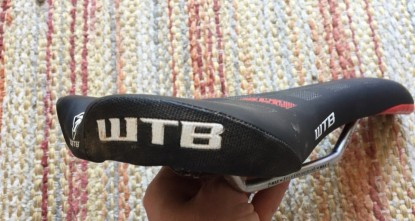 Abrasion-resistant rear of the WTB Volt saddle, showing reinforced material for enhanced durability
Abrasion-resistant rear of the WTB Volt saddle, showing reinforced material for enhanced durability
The Volt’s abrasion-resistant rear panel enhances its durability in key impact zones.
Credit: Jeremy Benson
Weight Measurement
Saddle weight is the most objective metric. In cycling, lighter components are generally preferred. Weight reduction in saddles is a common goal, and lighter saddles are often perceived as higher performance. Saddles offer a relatively easy and cost-effective way to reduce overall bike weight.
We weighed each saddle using a digital scale. Weights are specific to the tested models, and variations in construction and price points can affect weight. The WTB Koda and Tioga Spyder Outland were the lightest, at 203g and 202g respectively. The Spyder Outland is exceptionally light at 178g without the anti-slip pads.
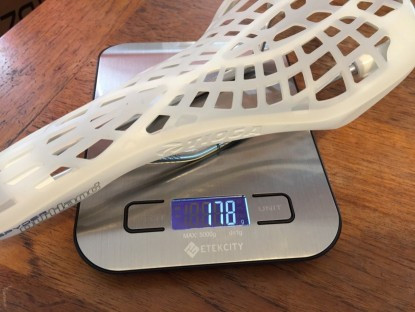 Weight comparison of mountain bike saddles, highlighting the importance of weight in saddle selection
Weight comparison of mountain bike saddles, highlighting the importance of weight in saddle selection
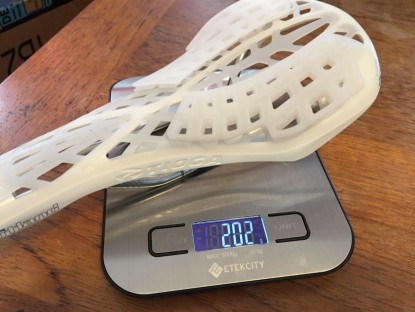 Weight scale showing mountain bike saddle weight, emphasizing the importance of weight for performance
Weight scale showing mountain bike saddle weight, emphasizing the importance of weight for performance
 Comfortable mountain bike saddle, underscoring the ultimate goal of saddle selection: rider comfort
Comfortable mountain bike saddle, underscoring the ultimate goal of saddle selection: rider comfort
Ultimately, a comfortable mountain bike saddle is paramount for enjoyable and efficient riding.
Credit: Jeremy Benson
How to Choose the Right Mountain Bike Saddle
Choosing the right mountain bike seat can transform your riding experience. Years of discomfort can be avoided by understanding key considerations.
Riding Style and Position
Different mountain biking disciplines—cross-country, enduro, downhill—require different saddle characteristics. Gravity-focused riders need durable, unobtrusive saddles. Cross-country riders prioritize pedaling efficiency and stable positioning for climbs and long rides. Saddle manufacturers typically specify intended use, which is a helpful starting point.
 Choosing a mountain bike saddle based on riding style, emphasizing the importance of matching saddle to discipline
Choosing a mountain bike saddle based on riding style, emphasizing the importance of matching saddle to discipline
Matching your saddle to your riding style is crucial for optimal comfort and performance on your mountain bike.
Credit: Jeremy Benson
Saddle Comfort and Fit
Saddle comfort depends on proper fit to your anatomy. Incorrect width causes pressure points and numbness. Too-wide saddles lead to chafing and hinder pedaling. Determine your sit bone width using DIY methods or professional measurement at a bike shop. Select a saddle width slightly wider than your sit bones.
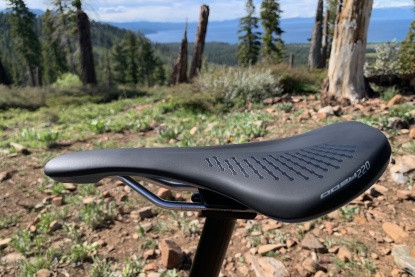 Importance of sit bone width for saddle comfort, highlighting proper fit as key to saddle selection
Importance of sit bone width for saddle comfort, highlighting proper fit as key to saddle selection
While saddle materials and shape matter, correct sit bone width is the most critical factor for saddle comfort.
Credit: Jeremy Benson
Rail Material
Saddle rails attach the saddle to the seat post and are typically made of aluminum, steel, carbon, or titanium. Carbon and titanium rails reduce weight but increase cost. Alloy rails offer similar performance at a lower price.
Materials and Construction
Saddle materials impact comfort and performance. Shell materials include composites, polymer, and carbon fiber. Carbon fiber shells are lighter and stronger but more expensive. Padding distribution affects fit and comfort. While more padding seems better, excessive padding can cause pressure and chafing.
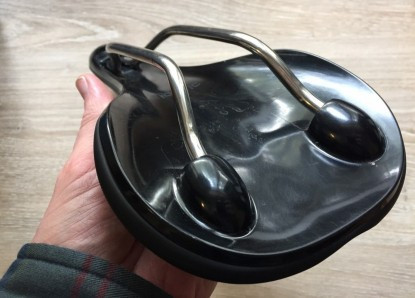 Saddle materials and construction, emphasizing their impact on comfort, performance, and price
Saddle materials and construction, emphasizing their impact on comfort, performance, and price
Saddle materials significantly influence strength, comfort, and price, making material selection a key consideration.
Credit: Jeremy Benson
Conclusion: Finding Your Best Mountain Bike Seat
A comfortable mountain bike seat is a vital component for an enjoyable riding experience. Choosing a saddle that fits well, performs effectively, and aligns with your budget is crucial. Our extensive testing and detailed reviews aim to guide you in finding the best mountain bike saddle for your needs, ensuring more comfortable and efficient rides on every trail.
